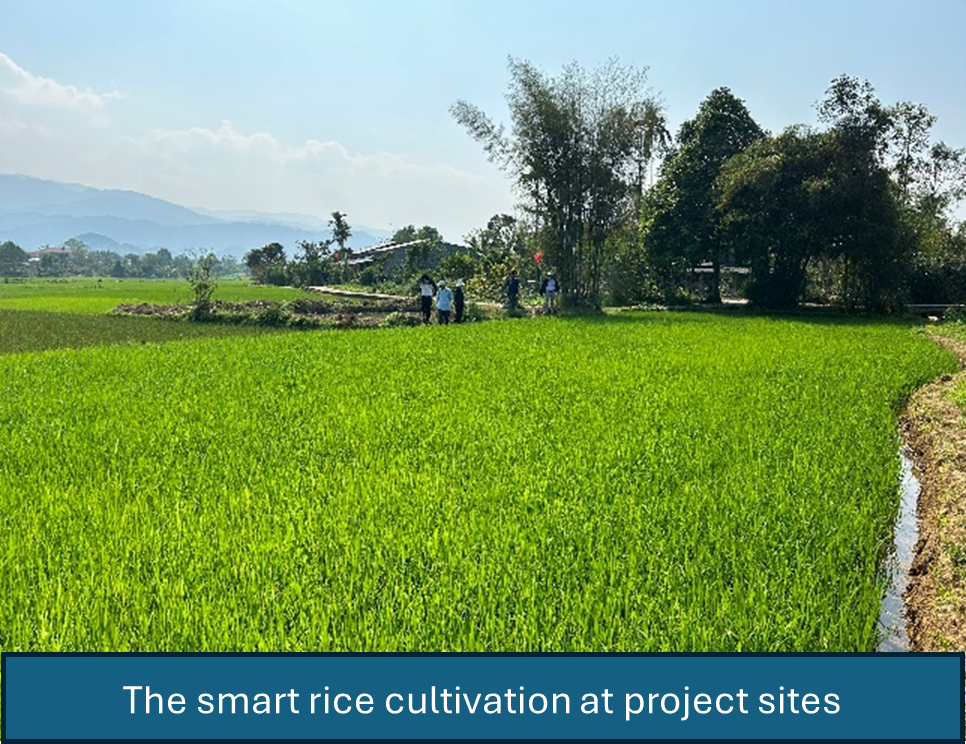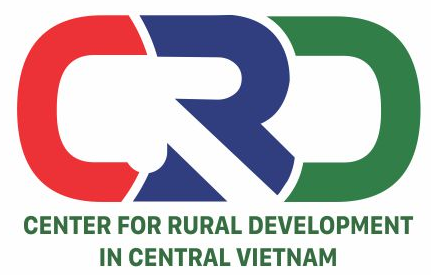A Luoi – the mountainous district of Thua Thien Hue province in Central Viet Nam, is home to around 50.000 inhabitants, 56% of which belong to ethnic minorities. A Luoi is highly prone to climate variability and climate change exacerbates vulnerability among small-scale farmers and threatens their livelihood. To foster adaptive capacity and resilience for minority groups in A Luoi district, the Center for Rural Development in Central Vietnam (CRD) has implemented the project “Climate-smart agriculture for ethnic minorities in central Viet Nam” financed by the International Climate Initiative (IKI). The project’s target group are 300 poor and vulnerableethnic minority households in two communes, A Roang and Hong Thuong. Also, women who are directly involved in agricultural production such as crops cultivation and small animal husbandry are also benefited from this project.
Integrated approach to develop Climate smart agriculture (CSA) models
The project is based on the theoretical framework of the impact pathway developed by the World Bank in 2016 (see Figure 1). The identification of Climate-Smart Agriculture (CSA) interventions was guided by a farming system analysis, which assessed climate challenges, market conditions, and institutional factors. The selection of these interventions was carried out through a consultative and validation workshop involving local authorities, project partners, and farmers.
Four types of CSA practices are to be implemented in two communes:
- Climate-smart rice cultivation models
- Climate-smart manure management to improve soil fertility
- Silage production for climate-resilient small ruminant farming
- Vermicomposting to mitigate the adverse effects of climate change
The implementation of these CSA practices has led to significant changes in beneficiary behavior. Minority groups have started adopting appropriate CSA technologies, engaging with local technical advisors, diversifying income sources, and exploring market opportunities. Additionally, knowledge and skills related to CSA techniques have been disseminated to the local community through project partners, including unions and institutions.

The behavioral changes among various stakeholder groups have led to long-term outcomes in the agricultural sector at the project sites. In practice, Climate-Smart Agriculture (CSA) is built upon three essential pillars of the global agenda, as illustrated by the triple-win approach for the agricultural sector (see Figure 2). These pillars include:
- Increasing Productivity: By maintaining and improving yields to ensure food security.
- Enhancing Resilience: Through the diversification of household income and the improvement of soil fertility.
- Mitigating Greenhouse Gas Emissions: By reducing emissions from agriculture and promoting carbon sequestration in plants and soils.

Climate smart rice cultivation model
The model has been initially piloted on 1,250 m², with plans to scale it up to three hectares by the end of 2024. The baseline study at the start of the project revealed that farmers at the project sites were still practicing high-density rice sowing, using between 5 and 6 kg per 500 m². Additionally, fertilizer application was imbalanced, with excessive use of urea, and pesticide use was adversely affecting community health and polluting the environment.

In response, the project aims to transform traditional farming methods through the “Three Reductions, Three Gains” concept. This approach promotes sparse sowing, manure application, balanced fertilization, alternating wet and dry irrigation, and integrated pest management (IPM) to reduce investment costs.
By adopting smart rice cultivation practices, including reduced use of nitrogen fertilizers, pesticides, and irrigation water, the project significantly mitigates greenhouse gas emissions. Moreover, this model not only enhances productivity and product quality but also lowers investment costs by reducing seed and fertilizer use. Advanced technical measures have improved pest management, allowing farmers to cut pesticide spraying by 2-3 times while protecting the environment and community health.
Climate smart manure management for improved soil fertility
Pig and cattle are commonly raised at the project sites, but ethnic minority farmers have historically struggled with effective manure management. Consequently, emissions of nitrous oxide (N₂O) and ammonia (NH₃) from manure have had detrimental effects on the environment, human health, and biodiversity. Efficient manure management practices are therefore essential, as they not only reduce greenhouse gas emissions but also promote environmentally and economically sustainable animal husbandry.

The project assists households raising cows and pigs by helping them design manure management tanks. Each tank is divided into two compartments: a larger one for storing manure and a smaller one for other waste products from livestock farming. As a result of the project, minority farmers are now producing organic fertilizer from manure— a practice they had not previously engaged in.
Silage for Climate Resilient Small Ruminant Production
In the target communes, pig and cattle production has faced seasonal feed shortages, making it essential to tailor feeding and nutrition strategies to align with climate-resilient agricultural practices. Silage has been identified as an effective solution to address these feeding constraints and ensure year-round feed availability. The project utilized forage VA06, local vegetables, and rice straw to produce silage.
The benefits of silage are demonstrated by:
- Reducing Nutrient Loss: Silage decreases the degradation of protein and nitrogen compounds during ensiling and rumen fermentation.
- Improving Nutrient Use Efficiency and Enhancing Profitability: Efficient nitrogen use in grasses reduces excretion, lowers dietary requirements, and increases net returns per cattle.
- Protecting the Environment: Silage helps reduce pollution, thus promoting environmentally friendly livestock production.
- Enhancing Productivity and Quality: Silage improves the productivity and quality of both cattle and pigs.

Vermicompost to mitigate the adverse effects of climate change
The project assists local communities in building concrete pits for earthworm cultivation. Manure and dung from pigs and cattle are primarily used in these vermicomposting beds. Earthworms feed on organic waste and produce “vermicasts,” which are rich in humic acids, nutrients, microbial populations, growth hormones, and enzymes. These vermicasts enhance soil quality and help crops withstand various abiotic and biotic stresses.

Lesson learnt
The integrated approach has helped minority farmers overcome several challenges related to Climate-Smart Agriculture (CSA), including limited education, skills, and knowledge; small-scale production; high investment costs; delayed benefits; and uncertainties. The capacity-building package was designed to equip farmers with essential knowledge and skills in climate change adaptation and CSA models. Additionally, CSA interventions were selected based on the capabilities of local ethnic minorities and the potential for short-term business returns. Market intelligence and improved production management were also fostered through the establishment of CSA collaborative groups and market linkages.
Strengthening the institutional network is crucial for maintaining, disseminating, and scaling up CSA practices within the broader community at the district level. A project management unit, comprising representatives from local authorities, departments, and unions, was established to support, monitor, and track project progress. This unit has been actively involved throughout the project, providing technical assistance to farmers for CSA implementation. Collaboration among CSA groups, commune authorities, unions, cooperatives, and technical departments has facilitated the sharing and dissemination of CSA knowledge and skills to other households not directly involved in the project.
Original article at: https://ikinews.climatechange.vn/climate-smart-agriculture-practice-a-pathway-for-ethnic-minoritys-livelihood-improvement/
